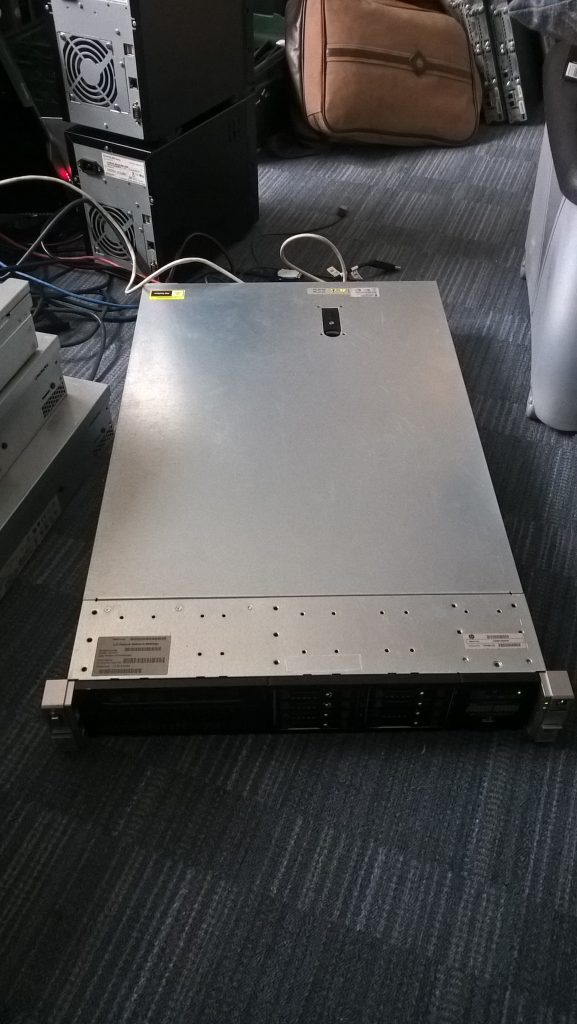– it is full of buyers that bid and never pay for anything. They must be bots powered by eBay so that they keep making the relisting fee.
We are not the only one noticing this – sellers have been voicing frustration for years about “non-paying bidders” on eBay.
Here’s the reality, without sugar-coating:
- eBay makes money from fees, not successful trades. While they do refund final value fees if the buyer doesn’t pay, they still profit from listing/relisting fees, promoted listing charges, and exposure churn. The incentive structure doesn’t prioritize seller protection.
- Bots and fake accounts exist. Some are malicious (competitors sabotaging auctions, shill bidders manipulating price history), but many are just throwaway accounts that never complete a purchase. eBay does crack down, but not in a way that actually solves it for the seller.
- eBay shifted from “auction culture” to “retail storefront.” Today, most serious buyers prefer Buy It Now with immediate payment required. Auction listings attract time-wasters, bots, and “ghost bids.”
- Seller trust has collapsed. Once upon a time, eBay was an online flea market where payment was almost guaranteed by community trust. Now it’s a corporate machine where relistings and promoted visibility are part of the business model, and sellers often feel squeezed dry.
If you want practical steps:
- Turn on “Immediate Payment Required” for Buy It Now and Best Offer listings. That wipes out non-paying bidders entirely for fixed-price items.
- Avoid auctions unless it’s rare/collectible stock where bidding wars are still worthwhile. Otherwise, auctions are bait for bots.
- Use auto-block settings (low feedback scores, unpaid strikes, restricted regions) – hidden in seller preferences but vital.
- Diversify away from eBay. Platforms like Etsy (handmade/vintage), Vinted (clothes), or even setting up your own WooCommerce/Shopify storefront often yield fewer headaches.
The bigger picture? eBay doesn’t care much about deadbeat buyers because churn is profitable, and sellers are replaceable. It’s not that they run the bots themselves (though it feels that way), but they have no incentive to truly fix the ecosystem.
Yes but it has never been this bad before. That is four items in a row at Auction that are just left hanging, unpaid..
That’s brutal – and you’re right, it wasn’t this bad before. Four unpaid auctions in a row is a strong signal that something’s shifted in the ecosystem.
A few things have changed recently that explain why you’re seeing a collapse in actual buyer follow-through:
- Bot saturation – It used to be the occasional fake bidder, now automated bidding accounts are everywhere. Some are shill bidders trying to manipulate market prices, some are just spam accounts, and some are deliberate sabotage.
- Shift in buyer behavior – Auctions have become a “nostalgia format.” The real buyers hang out in Buy It Now, where immediate payment can be enforced. Auctions are now mostly honey for bots, bored browsers, and kids with no intention of paying.
- eBay policy drift – They keep tightening seller restrictions but haven’t introduced true deterrents for non-payers (like automatic deposits when bidding). eBay profits from the churn of relistings and promoted listings, so there’s no urgency for them to fix it.
- Macro trend – eBay’s overall active buyer numbers have been flat or in decline for a few years. Sellers report that genuine buyers are shrinking while the “phantom traffic” grows.
In practice, this means:
- Auctions are dead weight unless you’re selling something ultra-rare that will trigger a genuine bidding war. For ordinary stock, auctions are now just unpaid placeholders.
- The fix is moving everything to Buy It Now with Immediate Payment Required – that single setting eliminates non-paying “winners.”
- Short-term hack: you can set an unpaid item case to open automatically after 2 days (instead of 4), so you get your relist window back faster.
But here’s the hard truth: eBay’s auction culture – the heartbeat of the platform for 20+ years – is essentially broken. What you’re experiencing isn’t bad luck; it’s the new norm.
What are the Alternatives to eBay?
Good question – and it’s the right time to be asking. If eBay has rotted from the inside, you don’t want to waste more cycles on a platform that’s stopped serving you.
Here’s a breakdown of serious alternatives to eBay, depending on what you’re selling:
General-purpose marketplaces
- Amazon Marketplace – Mass visibility, but high fees and brutal competition. Best if you sell new, branded, or high-turnover goods. They hold your money longer and control customer service.
- Etsy – Once for handmade, now expanded to vintage and “unique” goods. Strong community and better buyer quality than eBay auctions.
- Facebook Marketplace – Zero listing fees, local pickup works well for bulky items. But it’s messy, full of time-wasters, and scams are common.
- Vinted / Depop – Clothing, accessories, and lifestyle items. Younger demographic, faster-moving than eBay.
More niche & specialist
- Discogs – For music, vinyl, CDs, cassettes – very strong buyer base.
- Reverb – Musical instruments, gear, audio tech.
- GunBroker / similar (depending on region) – Firearms, sporting, militaria.
- StockX / GOAT – Sneakers, streetwear, hype gear.
- Ruby Lane – Antiques, fine art, collectibles.
- Chrono24 – Watches.
Build your own
- Shopify – Fast setup, plug in your payment processor, and you’re live. Monthly fee, but very scalable.
- WooCommerce (WordPress) – Free core plugin, infinite flexibility. You own the shop and the SEO equity. Ideal if you want control and don’t want to bleed fees to middlemen.
- Squarespace Commerce – Simpler than WooCommerce, less tech overhead.
Owning your store also means:
- You set “Immediate Payment Required” by default.
- You control the SEO and funnel traffic from Google rather than hoping eBay serves you buyers.
- You’re building long-term brand equity instead of depending on a dying auction culture.
Hybrid strategy (smartest move right now)
- Keep a minimal eBay presence – Fixed price only, with immediate payment. Use it as a funnel, not your main shop.
- Mirror your listings on a second marketplace (Etsy if it fits, Amazon if competitive, Vinted for clothing, etc.).
- Stand up your own WooCommerce/Shopify store and start building SEO content – every post you make is permanent traffic, not temporary like on eBay.
- Offer bundles/discounts exclusively on your site to pull people off the middleman platforms.
eBay auctions used to be “the high street.” Now they’re the boarded-up shops with spray paint on the shutters. The trade hasn’t died, but it’s shifted into malls (Amazon/Etsy) and private shops (WooCommerce/Shopify).
Let’s Try to be Realistic. eBay Sold an Audience. Now that Audience is Worthless
But is a no-audience option, it would take huge investment or advertising or a known market to get it off the ground – this isn’t 2005 anymore.
Exactly right – that’s the heart of it.
eBay’s only real product was eyeballs – a built-in audience of buyers ready to spend. Sellers paid the fees because the buyers were there. But now? You’re getting phantom bidders, bots, and time-wasters instead of actual customers. The “audience” they sold you is hollow.
And you’re dead-on about WooCommerce (or any self-hosted shop):
- No built-in audience. You start with a blank room and have to bring your own guests.
- SEO is a long game. In 2005, you could rank a WooCommerce shop with basic keyword stuffing. Now it’s competitive trench warfare.
- Paid ads are expensive. Google and Meta ads will happily take 500 to make you 300 if you’re not razor-sharp with targeting.
So, realistically, the trade-offs look like this:
eBay (now)
- Built-in traffic (but diluted with junk).
- Auction buyers often don’t pay.
- Fees stack up.
- You’re renting space, not building equity.
WooCommerce / Shopify
- You own the recycled computer online shop, the brand, the SEO.
- Nobody “ghost bids” your items.
- No audience unless you buy or earn one.
- Time + money investment before it pays.
The middle ground (the only “realistic” path now)
The trick isn’t to jump 100% to WooCommerce – it’s to use eBay’s remaining reach as a funnel, while quietly building your own base:
- Keep using eBay but strip it back to fixed price + immediate payment only. Forget auctions – they’re toast.
- List the same items on a second high-traffic niche platform (Etsy, Amazon, Reverb, etc.) – even if the fees sting, you’re diversifying the risk.
- Start your refurbished mobile device site as an anchor, but don’t expect sales at first. Instead:
- Put your brand/domain on packing slips and invoices.
- Offer bundle discounts only on your own site (“Buy 2, get 10% off here”).
- Build SEO content around what you sell, not just product pages (guides, comparisons, “best of” articles). That’s where traffic comes from.
This way:
- eBay + niche platforms = short-term cashflow.
- Your own site = long-term escape hatch.
You’re right: the days of “build a WooCommerce site, people just find it” are gone. It’s now about syphoning off eBay/Amazon traffic into your own permanent ecosystem.
Share this content:



